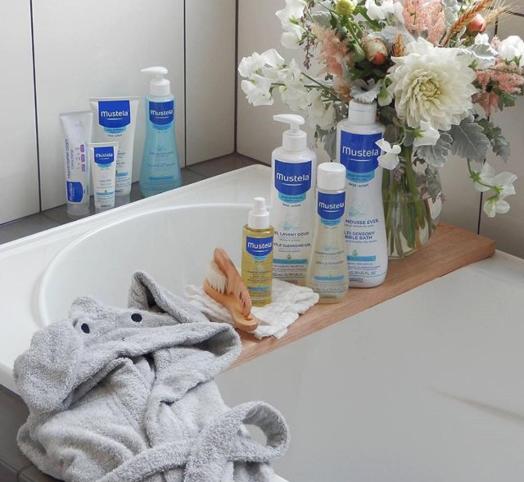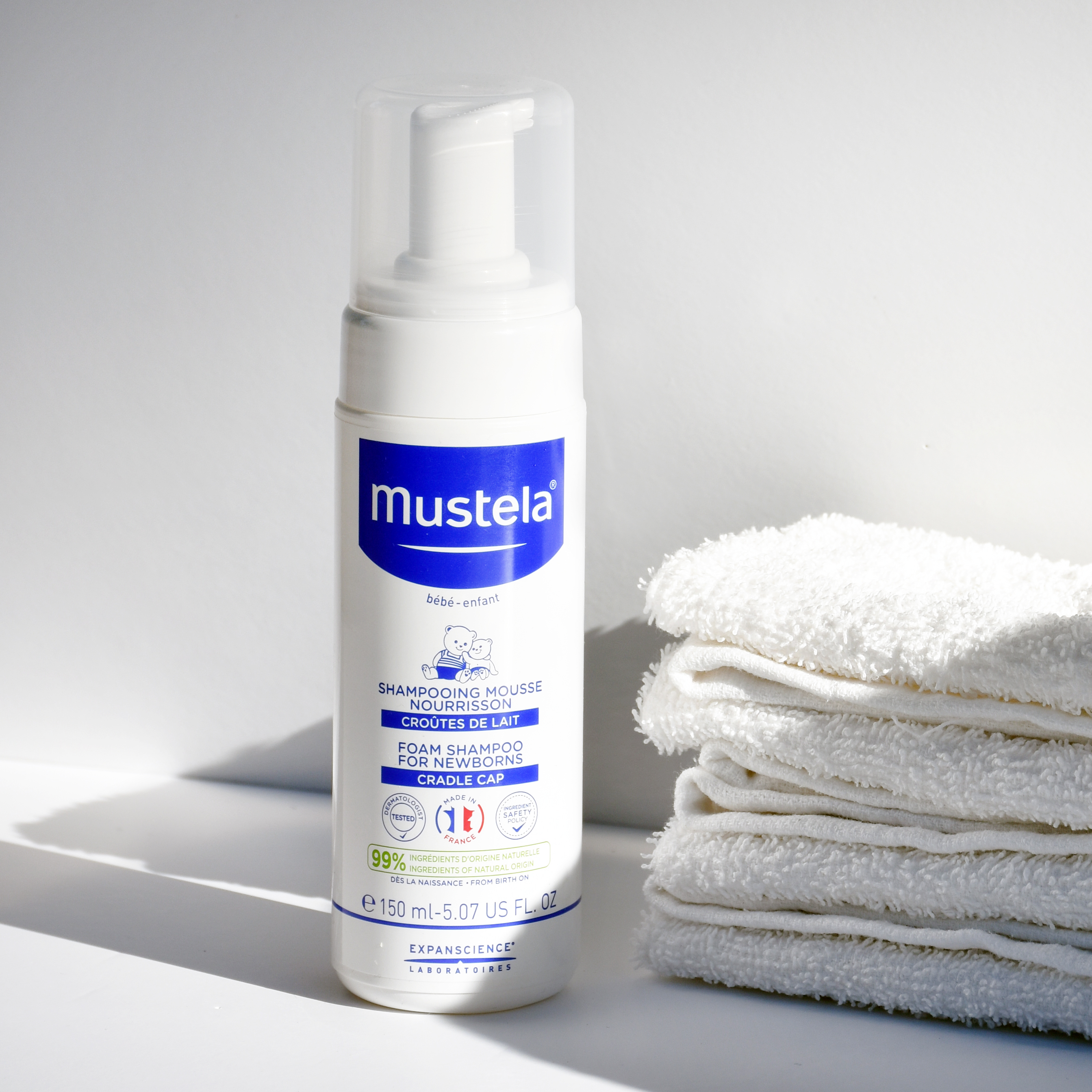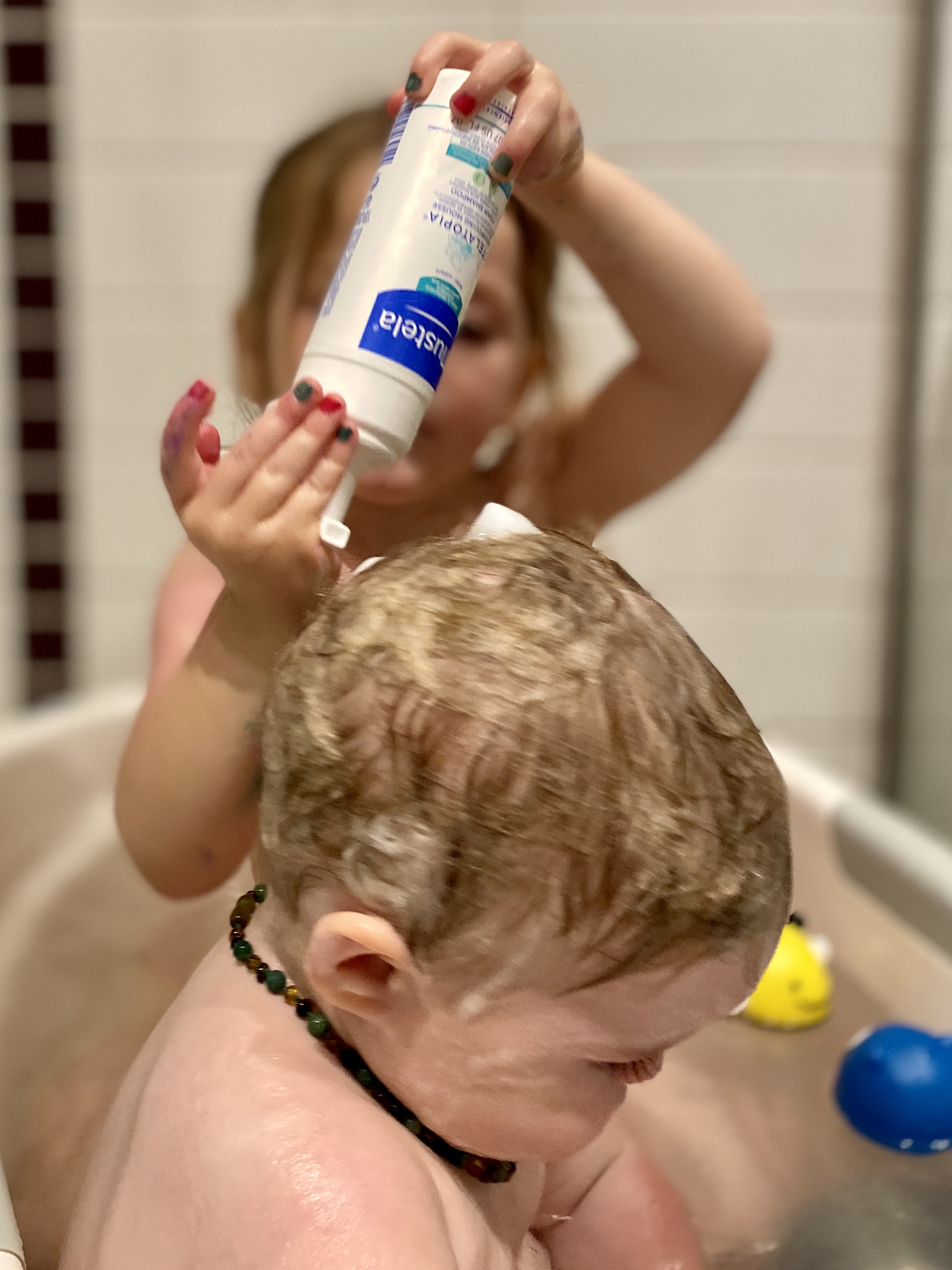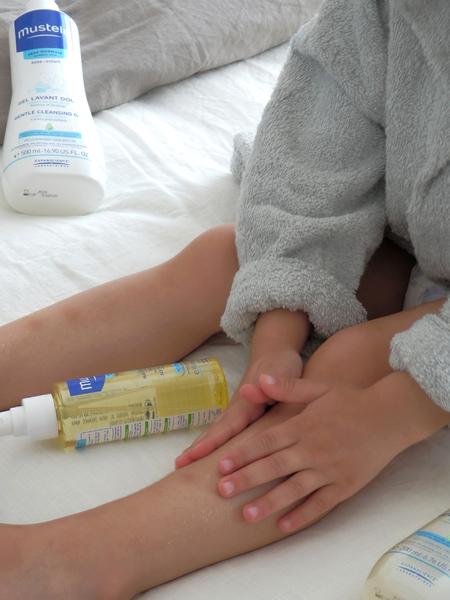Important Baby Hair Care Tips Every Parent Must Know
Updated on March 22, 2023
Created on July 18, 2022
AU & NZ - Find your nearest pharmacy here
Updated on March 22, 2023
Created on July 18, 2022

A sweaty and unclean scalp is one of the main causes of thin, brittle hair. Make sure to shampoo your baby's hair twice a week and massage their scalp. You can use baby shampoo or a head to toe product. The baby's hair doesn't need to be washed every day.
We recommend Mustela’s Gentle Shampoo, Foam Shampoo For Newborns, or Stelatopia Foam Shampoo.
Gentle Shampoo is a tear-free product that thoroughly cleans without removing your baby's skin's natural oils.
This mild shampoo is ideal for detangling your baby's fine and delicate hair.

Meanwhile, Mustela Foam Shampoo For Newborns is — you guessed it! — designed specifically for newborns. This fragrance-free shampoo is made of 99% naturally-derived ingredients and, like all Mustela products, is free of parabens, phthalates, and phenoxyethanol.
Plus, this baby shampoo is designed to minimise cradle cap flakes.

For babies with eczema-prone skin, go for Stelatopia Foam Shampoo, which is made to soothe, moisturize, protect, and strengthen your baby’s hair.
It’s fragrance-free, pH-balanced, recognized by the Eczema Association Australasia, and clinically tested on eczema-prone skin under paediatric and dermatological control.
Assuming that you’re giving your baby a full bath rather than only washing their hair, you’ll also wash their body with a cleanser like Mustela’s Gentle Cleansing Gel.
Now, all that’s left is to wash the shampoo away! Carefully rinse the shampoo from your baby’s head with your hand or a small cup.
Don’t forget that even with newborns who aren’t interested in playing in the bathtub, bathtime is a great time to bond with your little one and enjoy time with them.

An oil massage for the entire body, including the scalp is healthy as it is good for improving blood circulation to the hair pores and also helps in getting babies to sleep. In addition, it helps to moisturise the scalp and avoids the formation of dandruff. Apply an appropriate amount to your baby's scalp and gently massage it in a circular motion. You can use natural oils like coconut oil, olive oil, and others.
Cradle cap occurs due to an overproduction of sebum, the oily substance that keeps the skin moisturised. This may sometimes look like thick yellow or white scales on the scalp. It is common and often goes away between the ages of 8 and 12 months. To keep baby’s scalp clean, the best way is to wash and comb it frequently.
Combing stimulates the porous openings of the scalp and helps in healthy sebum production. Make sure to be gentle while combing as a baby’s scalp is sensitive. Use a large tooth, soft-bristled comb. Do not comb ‘a hundred times’ or unusually many times a day. Just once or twice a day is sufficient.
If your baby is bald, make sure to use moisturiser as it keeps the scalp soft, smooth and moisturised. This helps avoid dandruff that is caused by dryness.
You might be wondering when to give your child their first haircut if their hair is getting long. Whenever you want is the response. Giving your child a trim is something you can do at any moment.
Having said that, it's important to remember how unpredictable babies may be. Consider delaying your child's first haircut until it is absolutely necessary. Your baby could feel anxious in unfamiliar circumstances.
If you choose to give your child a new haircut, begin the procedure while they are well-rested. Additionally, feed them just before you start cutting. When your baby is well-rested and satisfied, they are considerably less likely to be cranky and irritable.
And, of course, be careful while cutting. Your baby has extremely delicate, sensitive skin, so you don’t want any mishaps with the scissors. Safety first!
Do not use any product meant for adults as they can be harsh on your baby’s skin. Baby products are specially designed, keeping their skin’s sensitivity in mind. Buy only tear-free shampoos as they do not cause any harm even if it trickles down to her eyes.
If you decide to let your baby’s hair grow, you need to be vigilant. Baby hair needs to be trimmed, oiled and kept clean. Do not leave the oil on your baby‘s hair for a long time as this would attract dirt and dust. Also, avoid tight hairbands or tight clipping of the hair as your baby may not able to communicate any discomfort that she may experience.
This is a typical issue that arises with infants who have long hair. Using a conditioner made for babies is an excellent method to avoid their hair from getting tangled. Comb their hair softly and without using excessive force on a regular basis.
It's simple to take care of your baby's hair. In fact, because hair damage and loss are not issues at such a young age, maintaining hair as a child is easier than maintaining adult hair. The only serious problem you need to watch out for is cradle cap.
A healthy, balanced diet is crucial to helping your baby grow thicker, fuller hair.
If baby is at least 6 months old and eating solid foods, feed them foods rich in iron, vitamin A, B vitamins, vitamin D, zinc, and protein.
For example, baby-friendly vitamin A foods include:
butternut squash
pumpkin
carrots
mango
Foods rich in B vitamins include:
beans
meat
eggs
whole grains
potatoes
Vegetables like leafy greens are rich in iron, which helps carry blood and oxygen to the hair follicles and stimulates growth.
If you’re breastfeeding, it’s important that you maintain a healthy diet, too. Your diet is essential to your baby’s growth and development. The food you eat can also encourage hair growth.